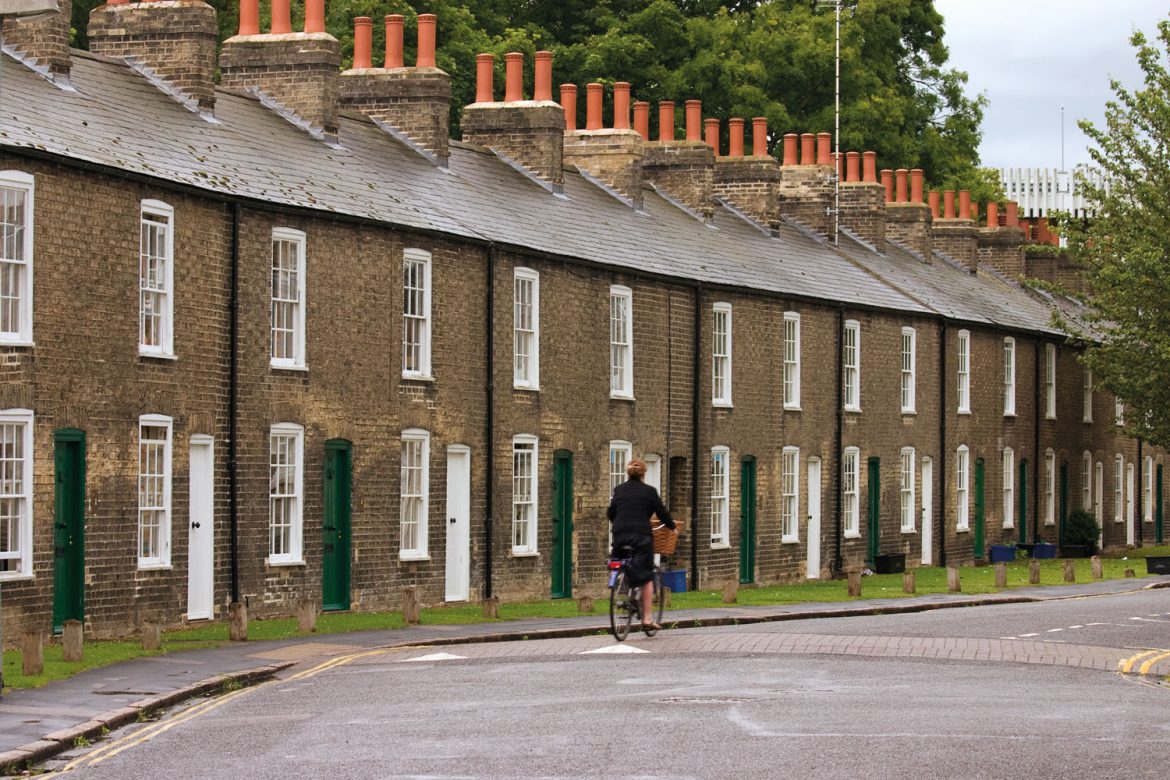If you’re in the property business in our area, Christmas has come early. So early, in fact, that, for some, the bells started ringing out in January – and haven’t really stopped since. “We’re up almost 28 per cent in terms of property sold and values have also increased,” says Ed Meyer, head of residential sales at Savills. Prices have risen steadily, to the point where buyers snaffling a deal on a property in one of our area’s brand new developments are likely to see values increase by as much as ten per cent by the end of the year. Admittedly, rising prices are something of a phenomenon in the south of England as a whole. What is perhaps surprising, however, is that the number of new homes becoming available through the year in our area still hasn’t had any noticeable cooling effect. One clue is the relatively low number of transactions.
Stephanie McMahon, head of research at Strutt & Parker, says that by the end of August this year, just 1,121 properties had changed hands in central Cambridge, slightly lower than the same period in 2012, when the figure was 1,457. It reflects an acute shortage of stock. Stuart Harris, a partner at Carter Jonas, points out that despite talk of another property bubble, transaction levels are still well below their peak six years ago, something that’s confirmed by research. “The undeniable fact is that the housing market has not so much underperformed as simply not functioned for the last five years,” says a recent report from Savills. Though he has seen transaction volumes up by around 25 per cent compared with last year, Stuart Harris also believes there is still some way to go.
“If you set a benchmark of numbers of transactions as being 100 per cent in 2007, we might be up at around 75 per cent of that now.” Pair this with the non-stop growth of the local population, with numbers expected to rise ten per cent in the next few years, courtesy of organisations such as AstraZenaca, whose new global headquarters will employ around 2,000 people, and Addenbrooke’s Hospital whose expansion will create 9,000 new jobs, and it’s not surprising that many house-hunters are deciding to act sooner rather than later.
Property has been fast moving everywhere, but particularly so in the city centre, where existing homes are in short supply and the small number of central new-build schemes, including the Berkeley Homes Riverside development and Parkside Place, developed by Grosvenor Homes, have either sold out or are extremely close to selling out. “There simply isn’t enough supply in Cambridge to meet that demand,” says Cameron Ewer, a partner at Strutt & Parker. “That’s why people are competing, fighting hand over fist to secure a house.”
As a result, anyone who had hoped for a centrally located period gem in the most desirable streets, headed by Trumpington Road, Newton, Barrow, Barton and Chaucer Roads and just about anywhere in Newnham, will have been in for a long wait, with late 19th and early 20th century terrace homes heading the list of most requested homes in 2013. The biggest flurry of activity has been around homes priced between £350,000 and £750,000, followed by those in the £750,000 to £1.25 million or £1.5 million band and premium homes priced between £1.5 million and £2 million.
It has also been a fast-paced year for new builds. “Normally the developer will name the price and you pay it,” says Stuart Harris, “but in some instances, we’ve had multiple parties after a particular unit and that has meant competitive bidding. That’s an unusual phenomenon, but it’s very much location driven.” And 2013 is the year things have really got going, says David Bentley of Bidwells. “We’ve really started to get into the nuts and bolts of developments on the southern fringe.” And while much of the new development has been concentrated in the south of our area, plans for the new community, Darwin Green, to the north, are advancing rapidly.
With pressure on property unlikely to ease off any time soon, it’s not surprising that the rental market, too, has proved a vibrant one. “We have a transient population which is going to increase,” explains David Bentley. Given the solid growth that has affected all types and size of home, it can start to seem as if the property market has no losers. But though the advent of the Help to Buy scheme is designed to ensure firsttime buyers aren’t left high and dry, some property experts urge caution. “These are better times for first-time buyers but it’s still very difficult,” says Ed Meyer. “Help to Buy is helping the Trumpington’s many developments over the year, such as Trumpington Meadows, have helped to heighten its attraction scenario, freeing up lending for those with low deposits, but they are competing against second homers, investors, foreign investors and other first-time buyers, too.”
As to 2014, opinions are divided over the likelihood of more property coming on to the market. If it happens, thinks Stuart Harris, “it will redress the shortage of supply that’s been a problem for the past six years.” But, as Ed Meyer points out, once here, our city can be just too good to leave. “There’s lots going on here. People tend not to move.” “I think actually what’s likely to happen is that people are going to get priced out of the city centre and look further afield,” says Cameron Ewer. “The next big opportunity is for people in the villages surrounding Cambridge. They will see the more significant growth whilst Cambridge continues to grow at a very steady rate, in what I’m sure will be a fast-improving property market.”

